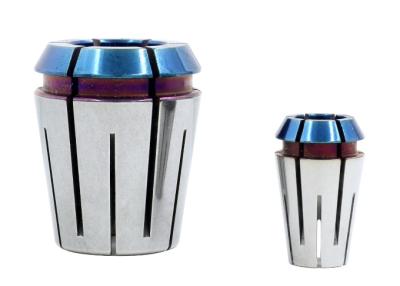
Parlec has released the new P3 ER collet system, the first coated ER collet system according to the company. Parlec P3 ER collets feature a special anti-friction coating on the 30° face of the collet that interfaces with the collet nut when tightening during tool setup. According to Parlec, the anti-friction coating reduces radial distortion helping improve run-out. Parlec P3 ER collets have a repeatably accuracy of 0.0001” and are sealed for coolant pressures up to 2,000 PSI due to a special slotting design. Parlec P3 ER collets are available in ER11, 16, 20, 25, 32 and 40 in inch and metric sizes and are meant to be used with on-size tooling. P3 ER collets may be used in any ER collet chuck to improve accuracy and cutting performance.
Contact Details
Related Glossary Terms
- chuck
chuck
Workholding device that affixes to a mill, lathe or drill-press spindle. It holds a tool or workpiece by one end, allowing it to be rotated. May also be fitted to the machine table to hold a workpiece. Two or more adjustable jaws actually hold the tool or part. May be actuated manually, pneumatically, hydraulically or electrically. See collet.
- collet
collet
Flexible-sided device that secures a tool or workpiece. Similar in function to a chuck, but can accommodate only a narrow size range. Typically provides greater gripping force and precision than a chuck. See chuck.
- coolant
coolant
Fluid that reduces temperature buildup at the tool/workpiece interface during machining. Normally takes the form of a liquid such as soluble or chemical mixtures (semisynthetic, synthetic) but can be pressurized air or other gas. Because of water’s ability to absorb great quantities of heat, it is widely used as a coolant and vehicle for various cutting compounds, with the water-to-compound ratio varying with the machining task. See cutting fluid; semisynthetic cutting fluid; soluble-oil cutting fluid; synthetic cutting fluid.
- slotting
slotting
Machining, normally milling, that creates slots, grooves and similar recesses in workpieces, including T-slots and dovetails.
